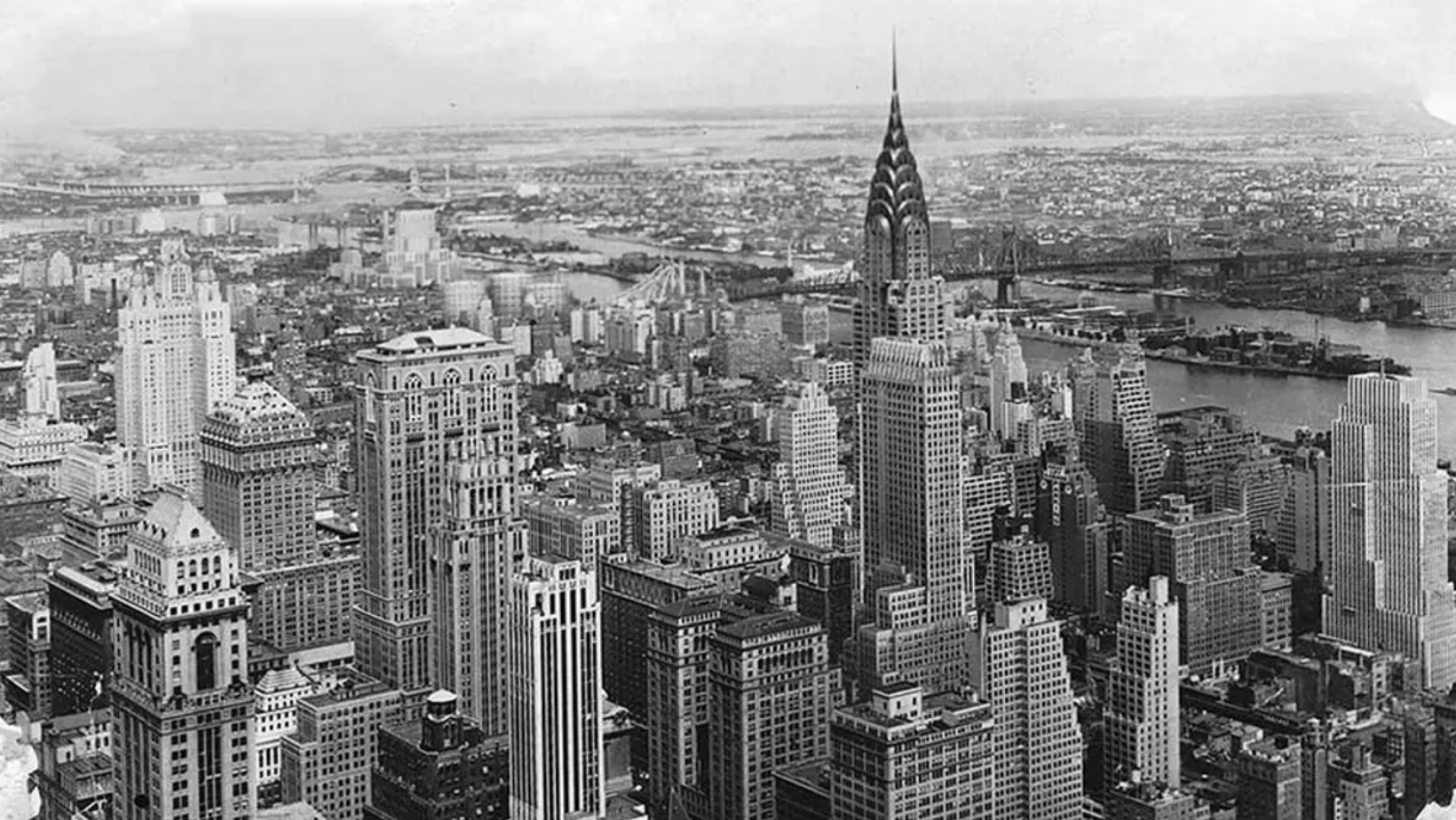The History of Architecture in New York
New York City, often called “The Big Apple,” is known for its impressive skyline, diverse architectural styles, and iconic landmarks. The city’s architectural history spans centuries, from Dutch colonial buildings to modern skyscrapers that define the city’s skyline. This blog post explores the evolution of New York’s architecture, highlighting key periods, styles, and famous structures.

1. Early Architecture (1600s – 1800s)
New York’s architectural history began with the Dutch settlement of New Amsterdam in 1624. The early buildings were simple wooden structures with steep gable roofs, resembling traditional Dutch houses. In 1664, when the British took control and renamed the city New York, architecture shifted towards Georgian and Federal styles, characterized by brick facades, symmetrical designs, and classical columns.
One of the oldest surviving buildings from this era is Fraunces Tavern, built in 1719, which played a significant role in the American Revolution. Another example is St. Paul’s Chapel (1766), a Georgian-style church that still stands in Lower Manhattan.

2. The Rise of Skyscrapers (Late 19th – Early 20th Century)
The Industrial Revolution and advancements in steel construction led to the birth of the skyscraper in the late 19th century. The Flatiron Building (1902), one of New York’s first skyscrapers, became an instant landmark with its unique triangular shape.
The Beaux-Arts style, inspired by classical European architecture, also became popular during this period. Grand Central Terminal (1913) and the New York Public Library (1911) are famous examples of Beaux-Arts architecture in New York.

3. The Art Deco Boom (1920s – 1940s)
The 1920s and 1930s saw the rise of Art Deco architecture, known for its bold geometric patterns, decorative metalwork, and futuristic designs. This era produced some of the most iconic skyscrapers in New York City:
The Chrysler Building (1930): A masterpiece of Art Deco design, featuring a stainless steel spire and intricate detailing.
The Empire State Building (1931): Once the tallest building in the world, it remains an enduring symbol of New York City.
Rockefeller Center (1930s): A large Art Deco complex known for its sculptures, murals, and the famous ice-skating rink.
This period marked New York’s transformation into a city of modern architecture and innovation.

4. Post-War Modernism (1950s – 1970s)
After World War II, architects moved towards Modernist architecture, which focused on simplicity, functionality, and glass-and-steel structures. This era saw the construction of:
The United Nations Headquarters (1952): A sleek, international-style building symbolizing global unity.
The Seagram Building (1958): Designed by Ludwig Mies van der Rohe, it introduced the minimalist glass-and-steel design that influenced many future skyscrapers.
Lincoln Center (1960s): A cultural complex featuring Modernist design, home to the Metropolitan Opera and New York Philharmonic.
During this time, many older buildings were demolished to make way for modern developments, sparking debates about historic preservation.

5. Postmodernism and Contemporary Architecture (1980s – Present)
The late 20th and early 21st centuries saw a shift towards Postmodern and Contemporary architecture. These styles combine historical influences with modern technology and sustainability. Notable examples include:
One World Trade Center (2013): Built on the site of the original Twin Towers, it is a symbol of resilience and the tallest building in the Western Hemisphere
.The High Line (2009): A transformed elevated railway turned into a public park, blending architecture and nature.
The Vessel (2019): A striking honeycomb-like structure in Hudson Yards, representing futuristic urban design.
New York City continues to evolve, embracing green architecture and sustainable designs. Buildings like The Edge (2020) and the new Penn Station redevelopment highlight the city’s commitment to innovation.

New York Architecture
History of New York Buildings
Skyscrapers in New York
New York City Landmarks
Famous Buildings in NYC
Colonial Architecture NYC
Art Deco Skyscrapers
Modern Architecture NYC
Postmodern Buildings NYC
Beaux-Arts Architecture
NYC Architecture Guide
Historic Buildings in New York
New York City Travel
Iconic Skyscrapers NYC
Urban Design New York





Fun Sun – ваш надежный туроператор для путешествий в Турцию из Москвы, туры.
Туроператор Fun Sun туры в Турции из Москвы [url=https://www.bluebirdtravel.ru]https://www.bluebirdtravel.ru[/url] .
[…] The History of Architecture in New York […]